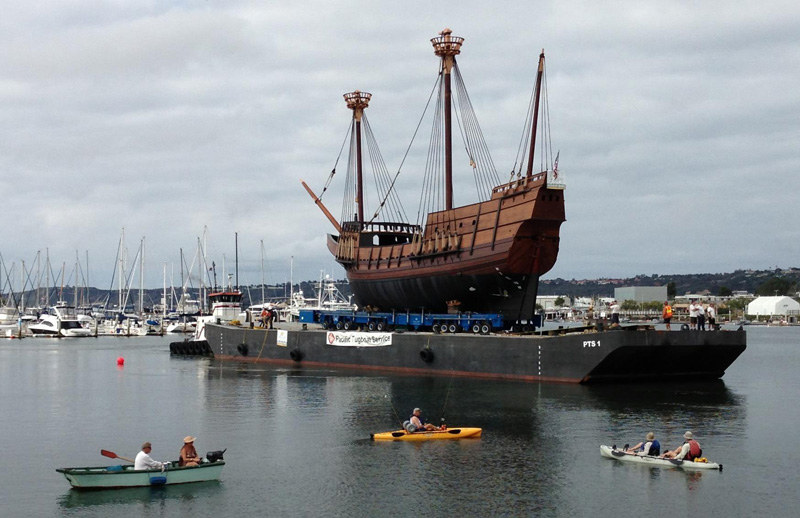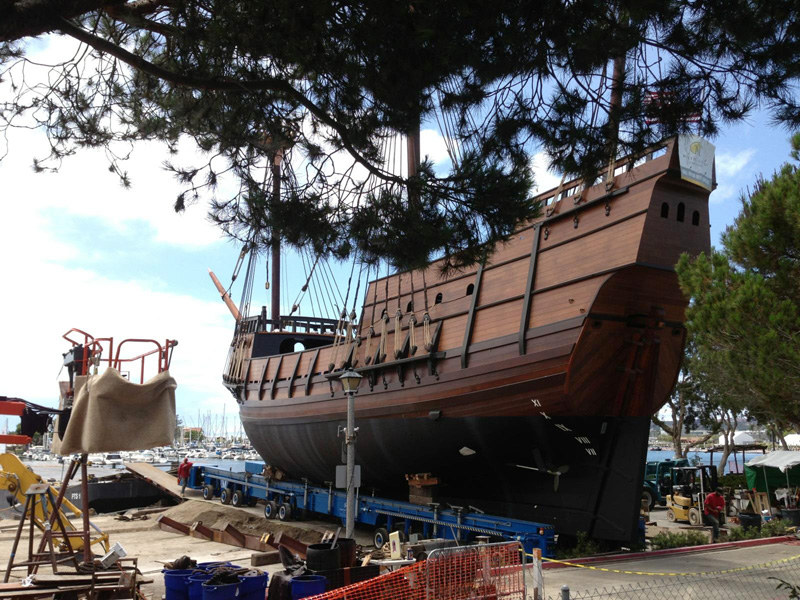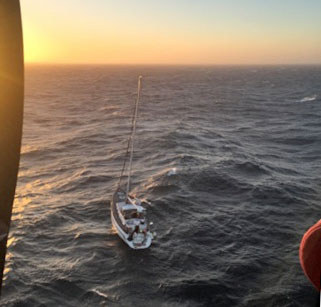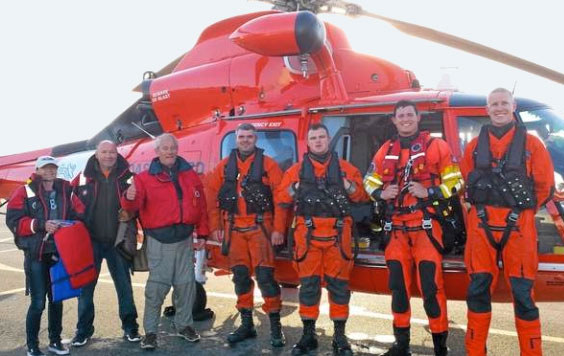
San Salvador Replica on the Move

Who was California’s first sailor? That distinction belongs to Portuguese explorer Juan Rodríguez Cabrillo, who — along with his crew, of course — was the first European to explore the coast of what is now California aboard the 100-ft galleon San Salvador. On September 28, 1542, Cabrillo’s party discovered San Diego Bay, a fact which has always been a point of pride with nautical history buffs there.
So much so, in fact, that the San Diego Maritime Museum sponsored the construction of a full-size San Salvador replica which is now nearly ready to launch. A major step in the process was completed early this morning when — after three days of various delays — professional builders and volunteers successfully moved the massive galleon from its build site at Spanish Landing Park onto a barge. She is now headed to the South Bay where she’ll undergo a variety of pre-launch preparations.

Latitude contributor Lynn Ringseis was on the scene: "The jubilant crowd cheered when San Salvador was safely on board the barge. Soon after, she was whisked away over pleasantly calm waters."
The original San Salvador was built in El Salvador, taking her name from that country’s capital. Cabrillo eventually sailed as far north as the Russian River, and also visited the Channel Islands. He died at Catalina Island.
With any luck, the new San Salvador will be launched in about a month. In the meantime, you can check out details and photos of the building process at the Museum’s website. The site has all sorts of interesting stuff, including free downloadable paper models of the ship.
After completion, the 94-ft galleon will become part of SDMM’s impressive collection of historic vessels, and will travel the California coast, serving as an ‘ambassador’ for San Diego. We can’t wait to see her here in the Bay.
North Coast Rescue
The Coast Guard rescued three sailors 53 miles west of Eureka at dawn on Friday. The 55-ft sailboat Kaloni was transiting from Bellingham, WA, to San Francisco when the crew called USCG Sector Humboldt Bay at 10 p.m. on Thursday.
The skipper told the Coasties that he’d lost engine power and the boat’s sails were torn. He and his crew (whose names have not yet been released) were in no immediate danger, but were unable to control the sailboat. The weather conditions offshore deteriorated through the night, with winds of 35 knots and a sea swell of 15-20 feet. As you might imagine, after several hours of this, the crew became seasick. As the seas were becoming increasingly dangerous, the distressed sailors requested immediate evacuation by the Coast Guard.

Sector Humboldt Bay dispatched a MH-65D helicopter piloted by Lt. Cmdr. Jason Bustamente and Lt. Cameron Welicka. When they located Kaloni, the wind was at 55+ knots and the seas had built to 25 feet. After two unsuccessful attempts to place a rescue swimmer, Petty Officer 2nd Class Max Kaczmarek, aboard the distressed vessel, the rescue crew lowered him alongside the sailboat, the sailors entered the ocean, and the Coasties hoisted them from the heavy seas one by one. None of the three sailors were injured.

"Those were by far the largest waves I have ever seen," commented Lt. Welicka.
"Fortunately, the sailors had the appropriate communications equipment to call for help," said Capt. Art Snyder, commander of Sector Humboldt Bay.
